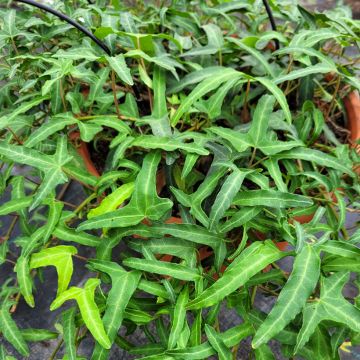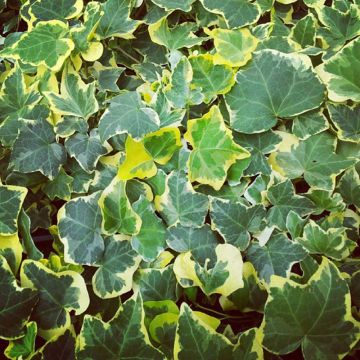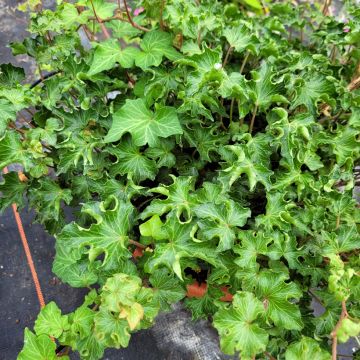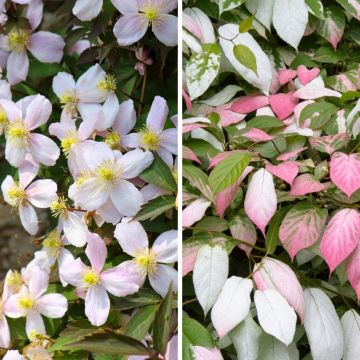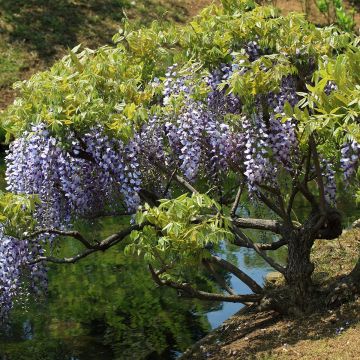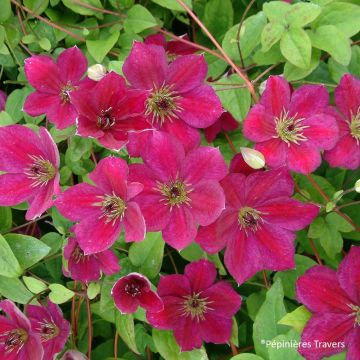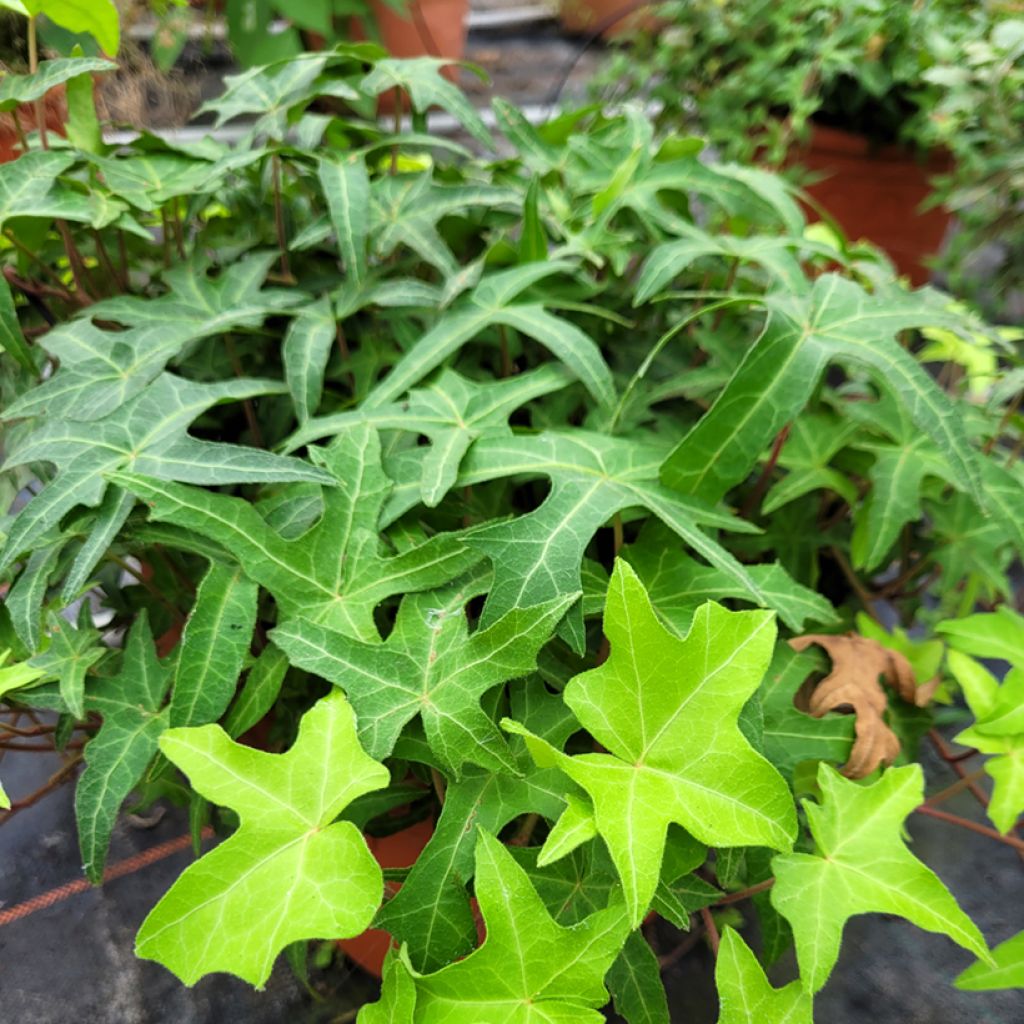

Hedera helix CourageCommon ivy


Hedera helix CourageCommon ivy
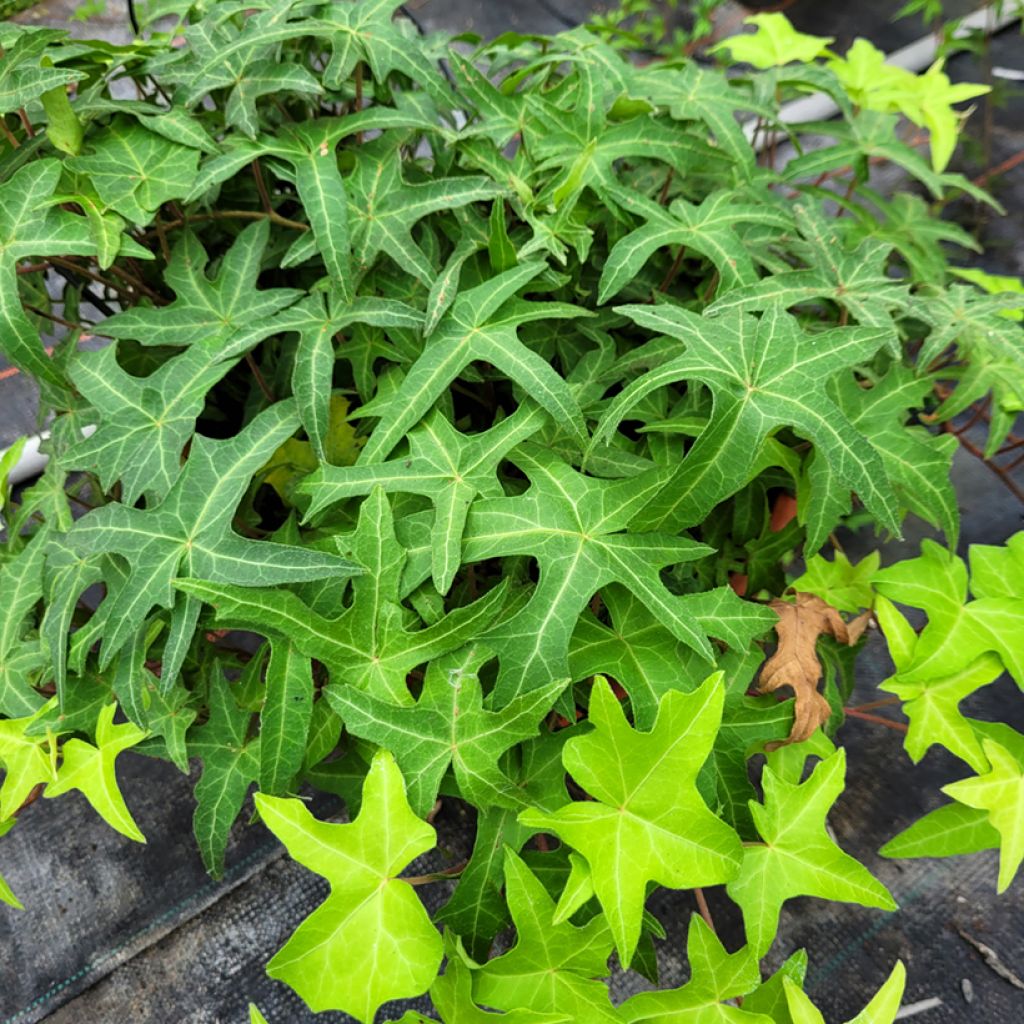

Hedera helix CourageCommon ivy
Hedera helix CourageCommon ivy
Hedera helix Courage
English ivy, Common ivy, European ivy
This item cannot be shipped to the selected country
Delivery charge from €5.90
More information
Schedule delivery date,
and select date in basket
This plant carries a 6 months recovery warranty
More information
We guarantee the quality of our plants for a full growing cycle, and will replace at our expense any plant that fails to recover under normal climatic and planting conditions.
From €5.90 for pickup delivery and €6.90 for home delivery
Express home delivery from €8.90.
Does this plant fit my garden?
Set up your Plantfit profile →
Description
Hedera helix 'Courage' is a variety of common ivy appreciated for its arrow-shaped, variegated evergreen foliage, its hardiness, ease of cultivation, and ability to climb on various structures. It is perfect for covering walls, fences, or as ground cover in shaded areas. It thrives in deep soils but shows resistance to dry conditions once established.
The common ivy, Hedera helix, is a plant from the Araliaceae family that grows in all undergrowth, where it can be seen climbing tree trunks or running along the ground. It is one of the easiest species to recognise, with its persistent and leathery leaves, more or less lobed, and prominent veins. This is a juvenile stage: when it reaches the top of its support (a wall, a tree...), the ivy becomes adult and produces entire leaves, without lobes. Between September and November, adult ivy blooms, forming small greenish-white umbels. While not especially decorative, they are extremely useful for pollinators, providing a late source of nectar. These flowers are followed by small black berries, loved by birds but toxic to humans. Ivy is capable of clinging on its own, thanks to its sturdy climbing roots carried by the young stems.
Hedera helix 'Courage' comes from a sowing of the 'Maple Leaf' variety. This plant features dark green, star-shaped, irregularly toothed, 5-lobed leaves, with golden or bright green margins. The leaf colour is more pronounced under bright conditions. This climbing and evergreen plant can reach approximately 3 m in height, with moderate growth. The arrow-shaped leaves have large teeth on the edges, offering an interesting contrast between their yellow border and the green interior of the surface. Growing 'Courage' ivy is very easy: provide it with deep, even calcareous or clayey, moist to wet soil, and it will establish itself permanently. It is also very hardy (-20°C). It prefers shade or partial shade, at least in the first few years, but once established, it shows great adaptability, even when the soil is somewhat dry.
Hedera helix 'Courage' can be planted in the garden or in pots. It can be used to dress walls, trellises, or fences. This variety also works well as ground cover: it helps prevent erosion and keeps the soil moist. In a planter, flower bed, or pot, it brings an elegant touch of greenery throughout the year. It can be paired with shrubby fuchsias, such as Fuchsia magellanica 'Riccartonii', tiarellas like Tiarella 'Angel Wings', small periwinkles Vinca minor 'Valentin', and small spring bulbs. Among the bulbs, you can include crocuses (Crocus chrysanthus 'Zenith), snowdrops (Galanthus nivalis), and grape hyacinths (Muscari armeniacum).
Contrary to common belief, ivy does not harm trees (it simply uses them as support). It may be that an old tree covered with ivy falls, but it is often the weight of its vegetation that bends an already weakened trunk. Furthermore, it will only damage a wall if the plaster is already degraded and cracked. There is therefore no risk in letting it climb a healthy wall. With its ecological usefulness, it would be a shame not to grow it!
Report an error about the product description
Plant habit
Flowering
Foliage
Botanical data
Hedera
helix
Courage
Araliaceae
English ivy, Common ivy, European ivy
Cultivar or hybrid
Other Hedera - Ivy
Planting and care
Hedera helix 'Courage' is easy to grow and can be planted all year round in fertile, moist, but well-drained soil, preferably against a wall, in any position sheltered from cold winds. To promote young shoots more quickly, attach the first ones to the ground (layering). You can rejuvenate the base by removing old branches. Prune regularly to shape it.
For container cultivation, mix 7 parts of regular soil, 3 of potting compost and 2 of sand. Water regularly during the growing season. Keep the substrate moist, but not excessively so, during winter.
Planting period
Intended location
Care
This item has not been reviewed yet - be the first to leave a review about it.
Foolproof climbers
Haven't found what you were looking for?
Hardiness is the lowest winter temperature a plant can endure without suffering serious damage or even dying. However, hardiness is affected by location (a sheltered area, such as a patio), protection (winter cover) and soil type (hardiness is improved by well-drained soil).

Photo Sharing Terms & Conditions
In order to encourage gardeners to interact and share their experiences, Promesse de fleurs offers various media enabling content to be uploaded onto its Site - in particular via the ‘Photo sharing’ module.
The User agrees to refrain from:
- Posting any content that is illegal, prejudicial, insulting, racist, inciteful to hatred, revisionist, contrary to public decency, that infringes on privacy or on the privacy rights of third parties, in particular the publicity rights of persons and goods, intellectual property rights, or the right to privacy.
- Submitting content on behalf of a third party;
- Impersonate the identity of a third party and/or publish any personal information about a third party;
In general, the User undertakes to refrain from any unethical behaviour.
All Content (in particular text, comments, files, images, photos, videos, creative works, etc.), which may be subject to property or intellectual property rights, image or other private rights, shall remain the property of the User, subject to the limited rights granted by the terms of the licence granted by Promesse de fleurs as stated below. Users are at liberty to publish or not to publish such Content on the Site, notably via the ‘Photo Sharing’ facility, and accept that this Content shall be made public and freely accessible, notably on the Internet.
Users further acknowledge, undertake to have ,and guarantee that they hold all necessary rights and permissions to publish such material on the Site, in particular with regard to the legislation in force pertaining to any privacy, property, intellectual property, image, or contractual rights, or rights of any other nature. By publishing such Content on the Site, Users acknowledge accepting full liability as publishers of the Content within the meaning of the law, and grant Promesse de fleurs, free of charge, an inclusive, worldwide licence for the said Content for the entire duration of its publication, including all reproduction, representation, up/downloading, displaying, performing, transmission, and storage rights.
Users also grant permission for their name to be linked to the Content and accept that this link may not always be made available.
By engaging in posting material, Users consent to their Content becoming automatically accessible on the Internet, in particular on other sites and/or blogs and/or web pages of the Promesse de fleurs site, including in particular social pages and the Promesse de fleurs catalogue.
Users may secure the removal of entrusted content free of charge by issuing a simple request via our contact form.
The flowering period indicated on our website applies to countries and regions located in USDA zone 8 (France, the United Kingdom, Ireland, the Netherlands, etc.)
It will vary according to where you live:
- In zones 9 to 10 (Italy, Spain, Greece, etc.), flowering will occur about 2 to 4 weeks earlier.
- In zones 6 to 7 (Germany, Poland, Slovenia, and lower mountainous regions), flowering will be delayed by 2 to 3 weeks.
- In zone 5 (Central Europe, Scandinavia), blooming will be delayed by 3 to 5 weeks.
In temperate climates, pruning of spring-flowering shrubs (forsythia, spireas, etc.) should be done just after flowering.
Pruning of summer-flowering shrubs (Indian Lilac, Perovskia, etc.) can be done in winter or spring.
In cold regions as well as with frost-sensitive plants, avoid pruning too early when severe frosts may still occur.
The planting period indicated on our website applies to countries and regions located in USDA zone 8 (France, United Kingdom, Ireland, Netherlands).
It will vary according to where you live:
- In Mediterranean zones (Marseille, Madrid, Milan, etc.), autumn and winter are the best planting periods.
- In continental zones (Strasbourg, Munich, Vienna, etc.), delay planting by 2 to 3 weeks in spring and bring it forward by 2 to 4 weeks in autumn.
- In mountainous regions (the Alps, Pyrenees, Carpathians, etc.), it is best to plant in late spring (May-June) or late summer (August-September).
The harvesting period indicated on our website applies to countries and regions in USDA zone 8 (France, England, Ireland, the Netherlands).
In colder areas (Scandinavia, Poland, Austria...) fruit and vegetable harvests are likely to be delayed by 3-4 weeks.
In warmer areas (Italy, Spain, Greece, etc.), harvesting will probably take place earlier, depending on weather conditions.
The sowing periods indicated on our website apply to countries and regions within USDA Zone 8 (France, UK, Ireland, Netherlands).
In colder areas (Scandinavia, Poland, Austria...), delay any outdoor sowing by 3-4 weeks, or sow under glass.
In warmer climes (Italy, Spain, Greece, etc.), bring outdoor sowing forward by a few weeks.





































